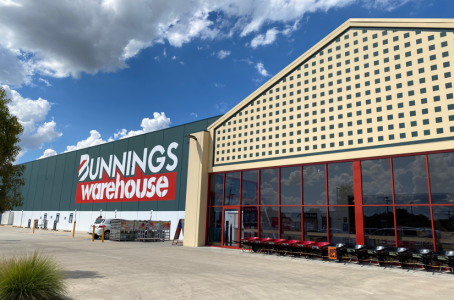Bunnings' alarming weed sales threaten ecosystems
By
- Replies 3
From the lush rainforests of Queensland to the rugged beauty of the Outback, our natural landscapes are a fundamental part of our national identity.
However, a recent ABC Rural report has highlighted a troubling issue that could threaten these ecosystems: the sale of invasive weeds by major Australian nurseries, including the retail giant Bunnings.
Escaped garden plants are not just a minor nuisance; they are the primary source of new weeds in Australia, with a staggering cost to the agriculture industry estimated at $4.3 billion annually.
The Invasive Species Council has highlighted that these plants have contributed to at least four Australian extinctions, disrupting the delicate balance of our native flora and fauna.
One particularly concerning example is the invasive ground cover gazania. This plant, originally from South Africa, is favoured by gardeners for its vibrant flowers.
Yet, it poses a massive problem as it spreads across regions like the Mallee and Wimmera in Victoria.
Mallee Conservation's president, Fiona Murdoch, explained that gazania competes with native species for space.
‘It's competing with native species for ground-cover space, and when you have weeds that out-compete the native species, you lose the habitat and the food resources that all of our other animals need to live on,’ she said.
Despite the Victorian government listing gazania as a 'highly invasive' species and the nursery industry's website, Grow Me Instead, branding it as 'very invasive,' these plants are still being sold.
However, gazanias are not listed as a declared weed under Victoria's Catchment and Land Protection Act, meaning nurseries can still legally sell them.
An Agriculture Victoria spokesperson stated that declaring all invasive plants as noxious weeds is impractical but urged Victorians to help protect the state’s biosecurity by avoiding the planting, selling, or trading highly invasive plants.
A seed packet of gazania from Mildura Bunnings costs just $5.50 and is marketed as 'very hardy'.
‘People think, 'Oh, it's going to be a nice, easy plant to grow,’ Ms Murdoch continued.
‘You can see it really spreading out from around townships because it was originally planted as a garden plant.’
According to Cam Rist, Bunnings' director of merchandise, ‘we rigorously adhere to all pertinent local biosecurity regulations and heed regulators' guidance regarding the plants we offer for sale.’
The Invasive Species Council's advocacy director, Jack Gough, points out that many nurseries, including Bunnings, need to adhere to the Grow Me Instead database.
This plant and others like Formosa lily, arum lily, and cocos palm are still widely available for sale in-store and online.
Jennifer McQueen, director of communications at Greenlife Australia, mentioned that Australian nurseries self-regulate using the Grow Me Instead database and an invasive plant risk assessment tool.
This approach aims to minimise the likelihood of plants being incorrectly planted.
The current self-regulation approach by the nursery industry, as defended by Greenlife Australia, is under scrutiny.
‘Greenlife Industry Australia backs the current approach, which is nationally supported, evidence-based, cost-effective, transparent and collaborative,’ Ms McQueen stated.
While they argue that their invasive-plant risk assessment tool and database are sufficient, evidence suggests that these measures could have been more effective in preventing the sale of invasive plants.
Jack Gough called for government intervention, stating that relying on gardeners or individual nurseries to self-regulate is a 'system designed to fail.'
‘The peak industry body has clearly listed these plants as at high risk of becoming weeds if they get into our waterways or bushland, and yet they are still sold in nurseries or online either through ignorance or because the law allows it,’ he said.
‘This isn't a Bunnings problem or an individual nursery or weedy plant species problem — it's an industry-wide problem.’
‘[The current system] depends on gardeners or individual nurseries to do the right thing," he said.’
‘This means we are relying on everyday Australians to either have a botany degree or to pay close attention to the warnings in the fine print of plant labels to stop their gardens becoming a ticking time bomb. That's a system designed to fail.’
The gravity of the situation has not gone unnoticed by the Australian government.
A spokesperson for the Department of Climate Change, Energy, the Environment, and Water has confirmed that a national threat abatement plan is being developed to tackle escaped garden plants.
This plan is a collaborative effort between the federal government and all state and territory governments.
In a similar story, an Australian gardener warned of the invasive nature of yucca plants, urging people to cut up and burn them due to their destructive root systems.
The yucca, once popular in Australian landscaping for its modern appearance, damaged fences, garden beds, and concrete. You can read more about this story here.

Have you encountered invasive plants in your local nurseries? How do you ensure that your garden is eco-friendly? We’d love to hear your thoughts and opinions in the comments below.
However, a recent ABC Rural report has highlighted a troubling issue that could threaten these ecosystems: the sale of invasive weeds by major Australian nurseries, including the retail giant Bunnings.
Escaped garden plants are not just a minor nuisance; they are the primary source of new weeds in Australia, with a staggering cost to the agriculture industry estimated at $4.3 billion annually.
The Invasive Species Council has highlighted that these plants have contributed to at least four Australian extinctions, disrupting the delicate balance of our native flora and fauna.
One particularly concerning example is the invasive ground cover gazania. This plant, originally from South Africa, is favoured by gardeners for its vibrant flowers.
Yet, it poses a massive problem as it spreads across regions like the Mallee and Wimmera in Victoria.
Mallee Conservation's president, Fiona Murdoch, explained that gazania competes with native species for space.
‘It's competing with native species for ground-cover space, and when you have weeds that out-compete the native species, you lose the habitat and the food resources that all of our other animals need to live on,’ she said.
Despite the Victorian government listing gazania as a 'highly invasive' species and the nursery industry's website, Grow Me Instead, branding it as 'very invasive,' these plants are still being sold.
However, gazanias are not listed as a declared weed under Victoria's Catchment and Land Protection Act, meaning nurseries can still legally sell them.
An Agriculture Victoria spokesperson stated that declaring all invasive plants as noxious weeds is impractical but urged Victorians to help protect the state’s biosecurity by avoiding the planting, selling, or trading highly invasive plants.
A seed packet of gazania from Mildura Bunnings costs just $5.50 and is marketed as 'very hardy'.
‘People think, 'Oh, it's going to be a nice, easy plant to grow,’ Ms Murdoch continued.
‘You can see it really spreading out from around townships because it was originally planted as a garden plant.’
According to Cam Rist, Bunnings' director of merchandise, ‘we rigorously adhere to all pertinent local biosecurity regulations and heed regulators' guidance regarding the plants we offer for sale.’
The Invasive Species Council's advocacy director, Jack Gough, points out that many nurseries, including Bunnings, need to adhere to the Grow Me Instead database.
This plant and others like Formosa lily, arum lily, and cocos palm are still widely available for sale in-store and online.
Jennifer McQueen, director of communications at Greenlife Australia, mentioned that Australian nurseries self-regulate using the Grow Me Instead database and an invasive plant risk assessment tool.
This approach aims to minimise the likelihood of plants being incorrectly planted.
The current self-regulation approach by the nursery industry, as defended by Greenlife Australia, is under scrutiny.
‘Greenlife Industry Australia backs the current approach, which is nationally supported, evidence-based, cost-effective, transparent and collaborative,’ Ms McQueen stated.
While they argue that their invasive-plant risk assessment tool and database are sufficient, evidence suggests that these measures could have been more effective in preventing the sale of invasive plants.
Jack Gough called for government intervention, stating that relying on gardeners or individual nurseries to self-regulate is a 'system designed to fail.'
‘The peak industry body has clearly listed these plants as at high risk of becoming weeds if they get into our waterways or bushland, and yet they are still sold in nurseries or online either through ignorance or because the law allows it,’ he said.
‘This isn't a Bunnings problem or an individual nursery or weedy plant species problem — it's an industry-wide problem.’
‘[The current system] depends on gardeners or individual nurseries to do the right thing," he said.’
‘This means we are relying on everyday Australians to either have a botany degree or to pay close attention to the warnings in the fine print of plant labels to stop their gardens becoming a ticking time bomb. That's a system designed to fail.’
The gravity of the situation has not gone unnoticed by the Australian government.
A spokesperson for the Department of Climate Change, Energy, the Environment, and Water has confirmed that a national threat abatement plan is being developed to tackle escaped garden plants.
This plan is a collaborative effort between the federal government and all state and territory governments.
In a similar story, an Australian gardener warned of the invasive nature of yucca plants, urging people to cut up and burn them due to their destructive root systems.
The yucca, once popular in Australian landscaping for its modern appearance, damaged fences, garden beds, and concrete. You can read more about this story here.
Key Takeaways
- Major Australian retailers, including Bunnings, are being criticised for selling plants listed as invasive weeds that threaten Australian ecosystems.
- Escaped garden plants are the primary cause of many new invasive species in Australia, costing the agriculture industry an estimated $4.3 billion annually.
- Greenlife Australia believed in self-regulation and did not think government imposition was necessary, whereas the Invasive Species Council advocated for regulation.
- The Australian and territory governments have agreed to develop a national plan to manage the threat of escaped garden plants, indicating potential future regulatory measures.








